I never found that “organic” as such was a particularly useful or meaningful term, no matter how laudable the practices involved. When I used to go to supermarkets, I bought organic produce which didn’t taste of much, or had been transported out of season from countries across the world. That didn’t seem to respect the value of provenance. Organic, as a vague feel-good word, generally seemed to be about ticking a few ethical boxes, and might be deemed A Good Thing, but it missed a beat in outlining a comprehensive and positive philosophy of farming.
Biodynamics effectively arranges the precepts of organic farming into a code of practice, at the same time as organising them into a holistic philosophical framework. The search for balance and ecological harmony in the vineyard, and working in conjunction with nature’s rhythms and the seasons are its underpinning principles. Biodynamics puts the act of farming at the centre and not at the top; it proposes a poly-rather than a mono-culture, it seeks to improve ecological sustainability rather than exploit the earth for short term gain.
Biodynamics addresses the roots of balance and growth, rather than viewing the farm as a utilitarian mechanism to produce material goods. Indeed, biodynamics posits the farm as part of a wider natural equation and seeks to provide natural balance and fertility so that the farm can function as a self-sustaining organism.
From personal experience, I have always enjoyed visiting biodynamic vineyards as I feel there is an intimate connection between the grower and the vineyard. Sometimes, you can also sense a special energy in a place, a life force, a sense of generation and regeneration.
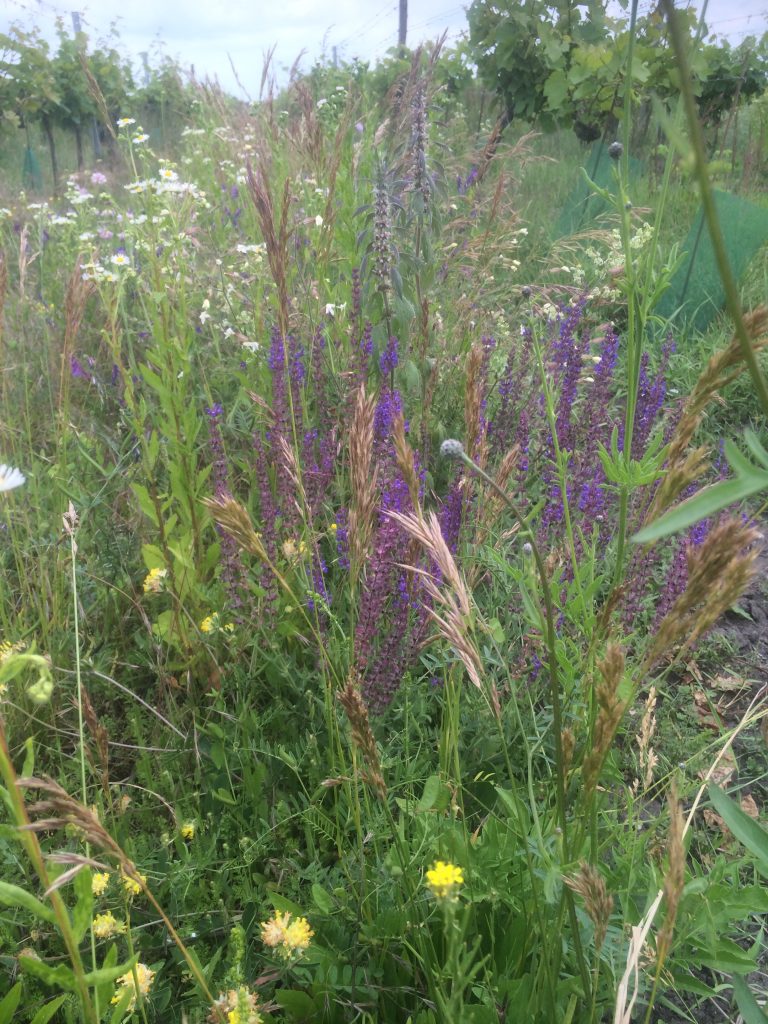
The origins of biodynamics
Wolfgang von Goethe (1749-1832), who was a natural philosopher and scientist as well as a poet, argued that the life history or development (ontogenesis) of organisms is not reducible to mechanistic explanation; life processes must be understood in teleological rather than causal terms, and the teleology (the end goal or indwelling purpose of life force) of an organism is best understood in terms of its holistic “form” or “type.” Holistic science must factor in the human observer and therefore is necessarily qualitative rather than reducible to quantitative measurement and mathematical abstraction. Goethe’s scientific method involved sustained observation of phenomena in nature through all of the five senses, but also through intuition and the imagination. Observation intensified through experimental variation would provide the observer with multiple perspectives and gradually lead him to intuit a unifying concept, the “form” or “type” of the organism under study. Ideally the observer becomes intuitively one with the phenomenon studied instead of objectifying it through mathematical abstraction. Macro-level understanding of the living form rather than micro-level (molecular or sub-molecular) construction is the goal of Goethe’s science, the diametric opposite of the goals and methodology of nanotechnology.
On the biodynamic farm, Goethean science becomes the model for understanding soil quality, the life of plants and animals, and the countless symbiotic relationships that make up the whole farm organism. If nothing else, Goethe taught that the farmer should focus her energies on seeing, hearing, smelling, feeling, tasting and intuiting the organic and inorganic life forms upon which the success or failure of the whole farm system depend.
A central aspect of biodynamics is that the farm as a whole is seen as an organism, and therefore should be a largely self-sustaining system, producing its own manure and animal feed. Plant or animal disease is seen as a symptom of problems in the whole organism. This is what Steiner was addressing in his talks. Steiner also suggested timing such agricultural activities as sowing, weeding, and harvesting to utilise the influences on plant growth of the moon and planets; and the application of natural materials prepared in specific ways to the soil, compost, and crops, with the intention of engaging elemental forces.
Rudolf Steiner – What did he do?
In 1924, in response to a request from farmers and landowners who had noted degraded soil, low fertility and the deterioration of the health of their livestock owing to chemical agriculture and over mechanisation, Rudolf Steiner gave a series of eight lectures in Silesia which later became the basis for organic hands-on agricultural movements. Steiner was not actually a farmer; he was a social reformer and a philosopher. He founded a spiritual movement called Anthroposophy, a form of spiritual science. He was deeply influenced by the ideas of Goethe and Rosicrucianism. After the First World War, Steiner established the Waldorf education schools, researched anthroposophical medicine and gave his lectures on biodynamics.
Steiner emphasized that the methods he proposed should be tested experimentally. For this purpose, Steiner established a research group, the mouth-filling “Agricultural Experimental Circle of Anthroposophical Farmers and Gardeners of the General Anthroposophical Society”. Between 1924 and 1939, this research group attracted about 800 members from around the world, including Europe, the Americas and Australasia. Another group, the “Association for Research in Anthroposophical Agriculture” (Versuchsring anthroposophischer Landwirte), directed by the German agronomist Erhard Bartsch, was formed to test the effects of biodynamic methods on the life and health of soil, plants and animals; the group published a monthly journal, Demeter. Bartsch was also instrumental in developing the sales organisation for biodynamic products, Demeter. which still exists today. The Research Association was renamed the Imperial Association for Biodynamic Agriculture (Reichsverband für biologisch-dynamische Wirtschaftsweise) in 1933. The Demeter trademark itself was created in Berlin in 1928 and spread internationally.
For all that we talk about Steiner as the father of biodynamics, it is important to remember that his version of biodynamics was never intended to be a precise methodology. Critics of Steiner*, and by extension his ideas about farming, would do well to remember that biodynamics was originally directed to address the sterilising effects of chemical farming. The overall lessons – how we treat the land, animals, other people and our communities and environment are still being learned, and that the holistic approach gives us an alternative perspective about the real value of farming.
*Steiner, as with so many philosophers, has been unkindly attacked by faux-historians and myth-makers. He was very much of his time, his ideas were sometimes brilliant, sometimes bizarre, but judging him through the lens of modern-day morality, results in straw-man arguments about his life that really do not withstand detailed scrutiny.
Biodynamic preparations
In his “agricultural course,” Steiner prescribed nine different preparations to aid fertilisation, and described how these were to be prepared. Steiner believed that these preparations mediated terrestrial and cosmic forces into the soil. The prepared substances are numbered 500 through 508, where the first two are used for preparing fields, and the other seven are used for making – or enriching – compost. One should note that the Steiner preps were not aimed specifically at vineyard management, but the same principles were meant to apply to whatever the farm was producing.
“Agronomy is not an exact science, but a humanistic science because it has to do with the living. It is a science that listens, that meets, that observes, that recognizes, like that of human relationships. Agriculture is not nature but with nature, co-existing. Nature is lawful and positive, constructing and following its own laws.” ~ Stefano Bellotti
The effectiveness of the treatments has long been a matter for debate, but to take them out of the context that Bellotti refers to is certainly the wrong approach. What can cold science measure in this regard? Only a limited amount is the simple answer. One long-term trial (DOK experiment) evaluating the biodynamic farming system in comparison with organic and conventional farming systems, found that both organic farming and biodynamic farming resulted in enhanced soil properties, but had lower yields than conventional farming. Regarding compost development, beyond accelerating the initial phase of composting, some positive effects have been noted in biodynamics, but the evidence has not been clear enough for many scientists or bio-sceptics.
So what? Is the role of the paid-up sceptical scientist to discredit all of biodynamics and caricature it as geomantic mumbo-jumbo or to try to understand how each element in the biodynamic equation may be part of an integrated approach to farming?
One of the difficulties in proving the positive results of biodynamics is that the identical conditions to prove a hypothesis can never be replicated. Each farm in itself is a massively complex organism with unique agricultural circumstances and its own particular history. To even to begin to understand the potential effects of biodynamics, you would need to be able to measure soil fertility and microbial life over a long period of time; look at specific disease pressure in the vineyard, look at how the farm reacts to the unique climatic conditions it is exposed to year after year, look at different blocks treated with different preps.
In the end, I wonder whether one can say anything other than the proof of the pudding resides in the “health” of the farms and the vines (and how do you quantify health?) and in the taste of the wine (again not quantifiable). All this unknowability does not invalidate biodynamics; it simply illustrates that the quality of research into the subject is insufficient. Observation, living day-to-day on the farm and noting subtle changes, is the ongoing research, learning from nature is real and valid, rather than cherry-picking individual ideas or treatments and putting them through forced analysis.
The field preparations
The best-known field preparation used for stimulating humus formation is 500, a mixture prepared by filling a cow’s horn with cow manure and burying it in the ground (40–60 cm below the surface) in the autumn. It is left to decompose during the winter and recovered for use as fertiliser the following spring. Steiner specified the use of cow horns, the associative reason for this being that BD500 specifically works to bring the energies to ground as the earth deeply ‘inhales’ in autumn. Cows are earthy animals with a strong bond to the earth in many respects. The use of cow horns optimises on female fertile energies – hence the preference for using cow horns bearing birthing rings. Another point of interest that biodynamic practitioners draw attention to is that the horn of a cow has a far greater blood flow through it than that of a bull. It is estimated that 80% of the blood flow of a cow goes through its horns, despite the horn not servicing any vital organ. The cow horn is therefore specifically imbued with a richness of life-giving blood.
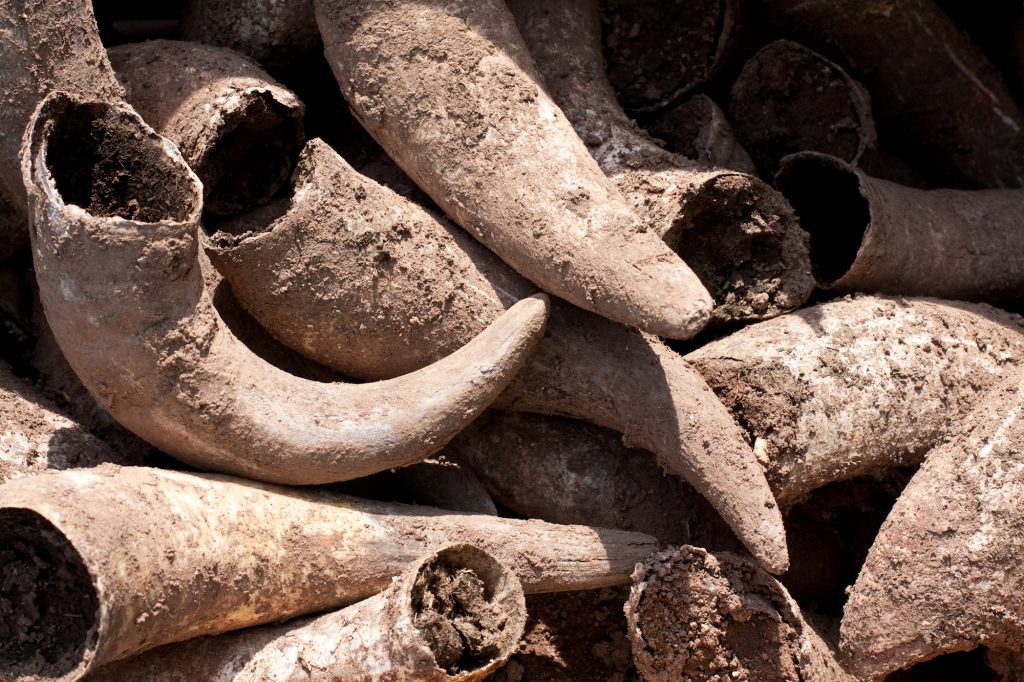
Furthermore, the cow possesses a most advanced digestive system, consisting of four stomachs and ensuring that the grazing has been through an extensive digestion process. The quality of manure is paramount in biodynamics– ideally, it should be from cows from the same farm and that are allowed feed from diverse pasture. There should be no use of any chemicals or antibiotics used in the herd.
Biodynamic agriculture has a keen focus on tuning into the natural rhythms of the earth, and the cosmos. Scientists roll their eyes when the word “cosmos” arises in discourse, because of its associations with head-in-the-clouds (or in the stars) philosophising. That is a somewhat narrow response. The seasons, after all, are not just changes in weather patterns; they reflect material changes in telluric energies. There is something more age-old and grounded about the biodynamic application of the word. Just as night and day may be seen as the earth breathing in and breathing out with each rotation, so there is a seasonal cycle in tune with the earth’s journey around the sun. Once a year the planet seems to inhale – in autumn – as everything goes to ground and slowly proceeds into winter dormancy. Spring is, by the same analogy, the time of the seasonal exhalation, often described as a ‘burst of life’. These seasonal cycles, however, have been so disturbed by global warming that many biodynamic farmers talk about the earth being out of balance and the vineyards find it difficult to adjust without a proper period of dormancy, for example. Anyway, farming is still based on these natural rhythms, the regard for cycles of decomposition and (re)composition, of flower and fruit, leaf and root, soil and sky and sun, of the micro and the macro.
As the 500 prep is intended to bring energies down to the ground to activate life in the soil, it is buried in the autumn. The fresh manure from a lactating cow is packed into the horns and a hole is dug in an area on the farm where the soil is fertile, well-aerated and well-drained. This hole is covered over with soil, leaving the preparation to develop over autumn and winter. As spring approaches the horns are excavated and inspected. The mixture inside will have transformed from a green, pungent manure into a browner, darker humus-like colour. The smell will have become sweet and earthy – almost peaty. The ideal consistency will be like clay. It will probably be lifted on a root day in the spring and will then be stored in a cool, dry, dark place in a container made from natural materials such as wood surrounded by a thick layer of peat.
When the farmer is ready to use BD500, a small dose is added to water and ‘dynamise’ the solution by means of a specific way of stirring that simulates the power of a vortex.
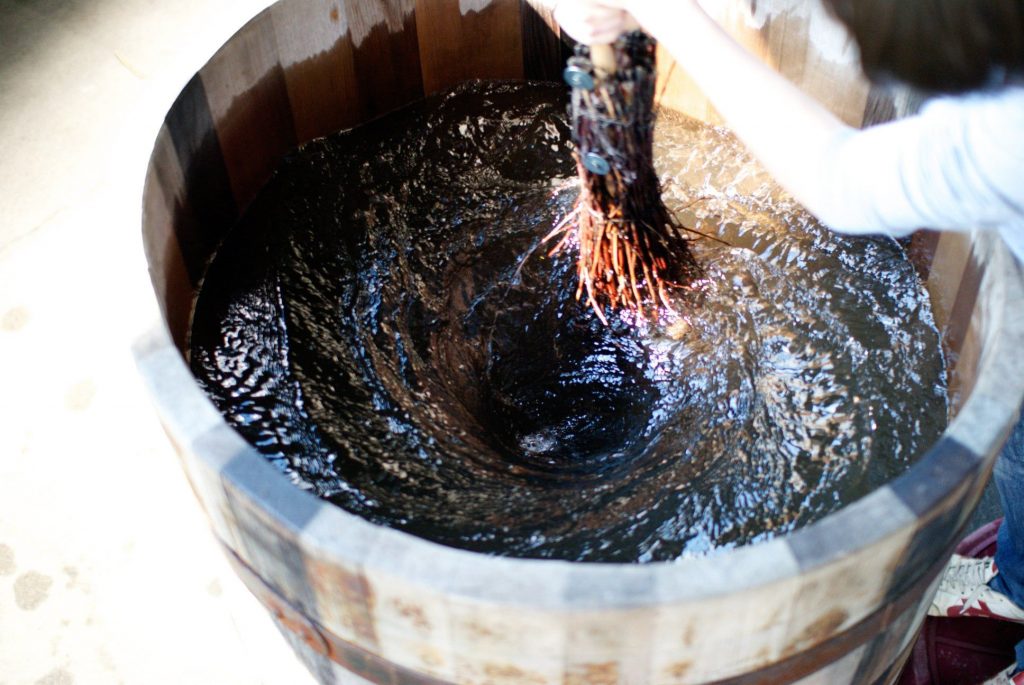
Before being applied, very small amounts of the spray preparations are dissolved in water and stirred rigorously for one whole hour. This is done by stirring (preferably by hand) in one direction in such a way that a deep crater is formed in the stirring vessel (bucket, barrel). Then the direction is changed, the water seethes and slowly a new vortex is formed. Each time a well-formed crater is achieved the direction is changed until the full hour is completed. In this way the dynamic effects concentrated in the prepared manure and quartz meal are released into the rhythmically moved water and become effective for soil and plant. It is then sprayed out immediately.
Horn Manure is sprayed towards evening directly on the soil prior to sowing and planting, or on pasture in the spring or after mowing or grazing. It encourages healthy root growth, vitalises the soil and helps the plant find what it needs from the soil.
Horn Silica is sprayed as a fine mist directly on the growing plant early in the morning. It helps to stabilise plant metabolism and enhance the qualitative development of the crop. [from www.biodynamic.org.uk]
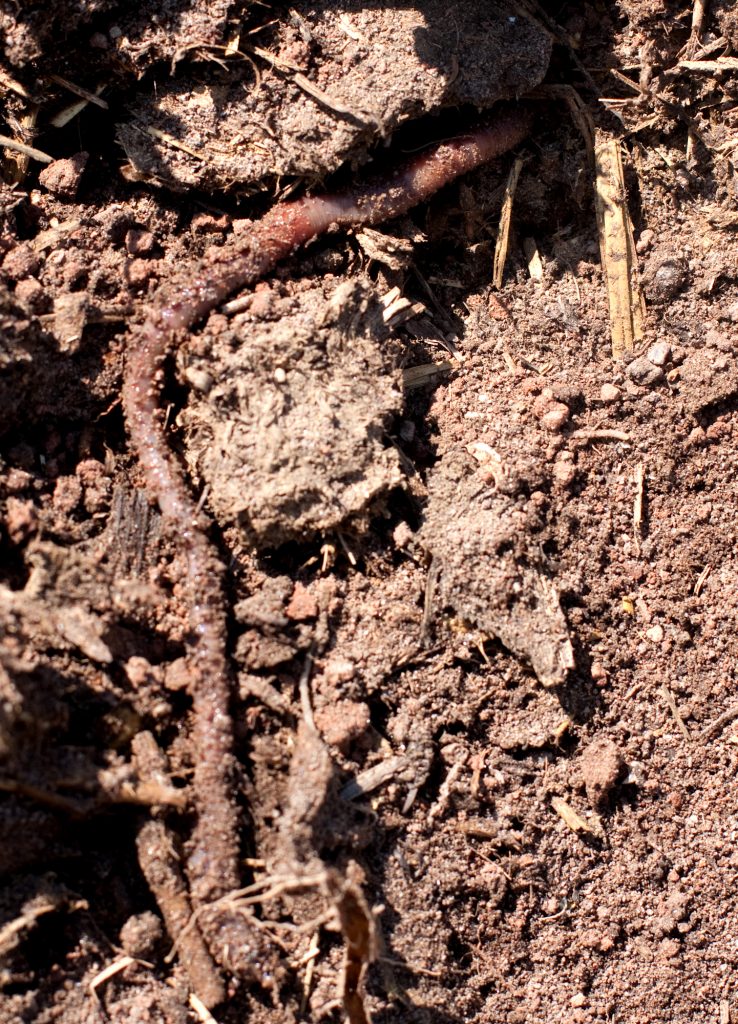
With regular applications, BD500 will assist with:
The formation of stable humus
Increased populations of soil bacteria and fungi
Increased earthworm populations
Improved soil structure
Improved absorption and retention of water
Enhanced root development
The other field preparation mentioned is 501, which is crushed powdered quartz stuffed into a cow’s horn, buried in the ground in springtime and taken out in autumn. It can be mixed with 500 but is usually prepared on its own. The mixture is sprayed under very low pressure over the crop during the wet season, as an antifungal. It assists photosynthesis and enhances ripening. It is used more particularly to stimulate the above-ground part of plants, and promotes the processes stimulated by light and warmth: flowering, fruiting, ripening, structuring, concentration, etc. The powdered quartz and horn act as an extra burst of sunlight for the plants.
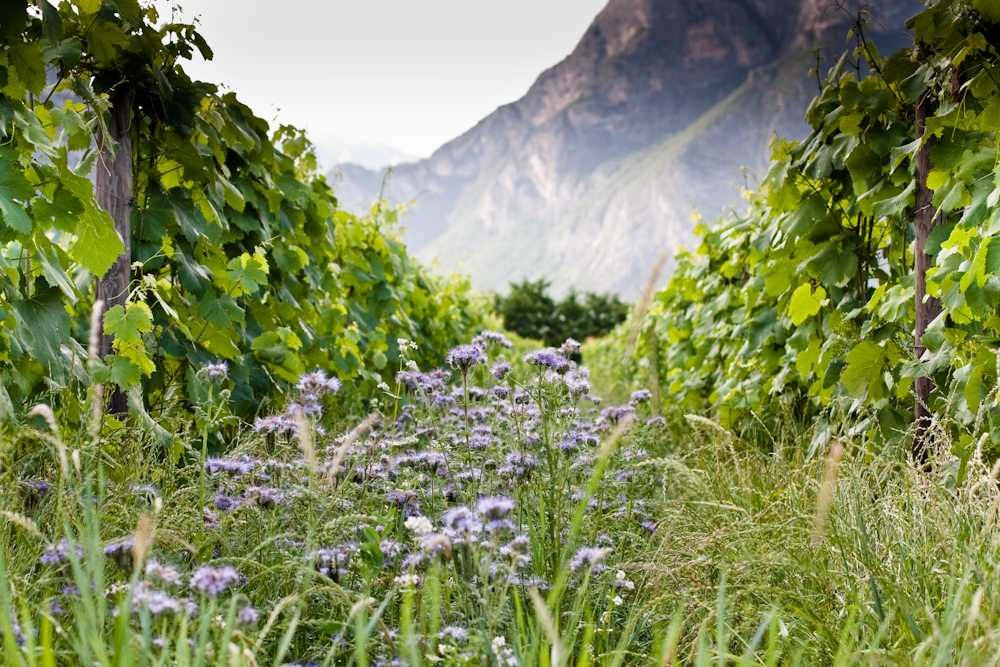
Compost preparations
The compost preparations Steiner recommended employ herbs which are frequently used in alternative or traditional medicines. Many of the same herbs Steiner referenced are used in organic practices to make foliar fertilisers, green manure, or in composting.
According to biodynamic practitioners, bringing these elements together magnifies their healing qualities, fosters the growth of beneficial bacteria and fungi, and creates powerfully concentrated substances to guide the development of the compost. A small quantity of each preparation is added to the compost pile just after it is built, and again after it is turned. Biodynamic preparations strengthen the quality of the compost by stabilising nitrogen and other nutrients, multiplying microbial diversity, and bringing more sensitivity to the composting process. Biodynamic compost helps attune the soil to the whole farm organism and wider influences while increasing soil life and stable organic matter. Biodynamic compost also brings more carbon into the living realm, helping to restore balance to the climate.
They are:
502: Yarrow blossoms (Achillea millefolium) stuffed into a deer bladder, hanging it to dry in the summer sun, burying it until spring and then mixing it into manure as a fertiliser. The finished mixture is supposed to stimulate potassium, silica and selenium-activating bacteria, all of which should help vines flower and fruit. A kind of uber-compost.
503: Chamomile blossoms (Matricaria recutita) stuffed into the small intestines of cattle, buried in humus-rich earth in the autumn, and retrieved in the spring. Chamomile is connected with living calcium processes and supposedly helps to stabilise plant nutrients, dampen down excessive fermentation, and invigorate plant growth.
504: Stinging nettle (Urtica dioica) plants in full bloom, stuffed together underground and surrounded on all sides by peat for a year. Stinging nettle has a relationship to iron, develops sensitivity in the soil, helps to stabilise nitrogen, and promotes the formation of humus.
505: Oak bark (Quercus robur) chopped into small pieces, placed inside the skull of a domesticated animal, surrounded by peat, and buried in the ground in a place near rain runoff. With its calcium rich nature, oak bark helps increases resistance to plant diseases and fungal attack.
506: Dandelion flowers (Taraxacum officinale) stuffed into the mesentery of a cow, buried in the ground during winter, and retrieved in the spring. Dandelion is connected with living silica processes and activates light influences in the soil.
507: Valerian flowers (Valeriana officinalis) extracted into water. Valerian has a strong affinity to the activity of phosphorous. It acts like a protective skin and provides a warmth blanket around and over the compost heap.
508: Horsetail (Equisetum). The role of horsetail is to help fight against debilitating moulds, or aphid attacks in greenhouses. It’s a classic example of using nature to find her own solutions. It’s applied as needed from early spring through early winter and is easy for home gardeners to make.
This is the full menu of compost additions. Many farmers just use the preps, others use some or all of the above, and not necessarily with skulls, intestines and mesenteries involved in the burial process.
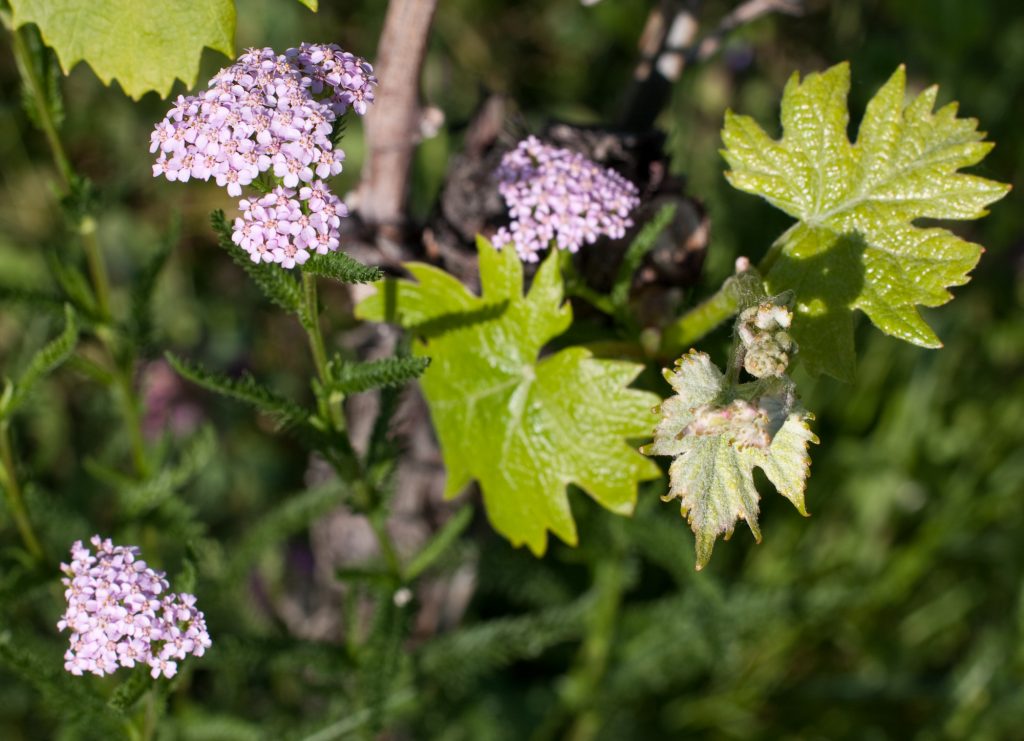
Planting calendar
Another biodynamic approach considers that there are lunar and astrological influences on soil and plant development—for example, choosing to plant, cultivate or harvest various crops based on both the phase of the moon and the zodiacal constellation that the moon is passing through, and also depending on whether the crop is the root, leaf, flower, or fruit of the plant. This aspect of biodynamics has been termed “astrological” and “pseudoscientific” in nature.
The thinking is that we are dependent on both the sun and the moon for life on earth, and consequently since the beginning of agriculture, both have held a profoundly symbolic importance for mankind. The influences of the moon’s gravitational pull on the seasons and plant growth (as well as animal and human behaviour) has been documented since ancient times. Biodynamics acknowledges these and other subtle cosmic forces, and works with them throughout the growing cycle. This is what is meant when people say ‘planting by the moon’.
Over 40 years of ongoing research by Maria and Matthias Thun and others into the influences of the moon, planets and constellations on plant growth has resulted in the publication of an annual astronomic calendar, The Maria Thun Biodynamic Calendar. This is used by biodynamic farmers, growers, gardeners and others to determine auspicious sowing, planting, cultivating and harvesting times of crops.
The astrological element of biodynamics is more controversial even than the adherence to the preps and various compost additions, as it implies that earthly actions should be determined by a concert of astral forces. It is certainly difficult to see how distant planets can assert any influence on the earth. The deeper symbolism here is that the earth is more merely than a surface crust over which life crawls; the earth as a whole heavenly body (if I may use that term!) receives life, light and energy from the sun and is affected by the gravitational pull of the moon. These powerful forces bookend the biodynamic farming process. The other elements in the calendar reinforce this notion that best farming practice is about establishing routines and adhering to rhythms. The vine, of course, puts its feet into the earth to draw up nourishment; it grows upwards to receive the light. It draws upon and unites these energetic influences. And the human has to tune into the same energies. Yes, this is all about creating alignments and structures by observing cosmic patterns. As one grower said to me with a smile on his face: “Biodynamics? I believe in the soil and not in the stars. But somehow I find it useful…”
Continue reading here.


Pingback: The organic growth of organic wines – Les Caves de Pyrene